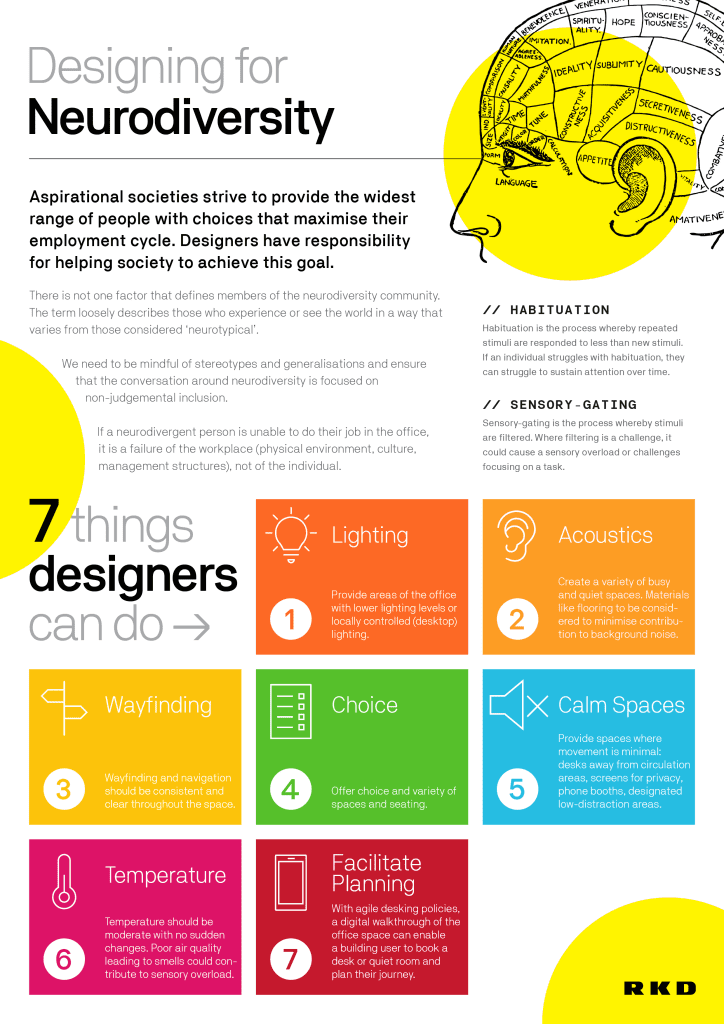

Aspirational societies strive to provide the widest range of people with choices that maximise their employment cycle. Designers have responsibility for helping society to achieve this goal.
There is not one factor that defines members of the neurodiversity community. The term loosely describes those who experience or see the world in a way that varies from those considered ‘neurotypical’.
We need to be mindful of stereotypes and generalisations and ensure that the conversation around neurodiversity is focused on non-judgemental inclusion. If a neurodivergent person is unable to do their job in the office, it is a failure of the workplace (physical environment, culture, management structures), not of the individual.
Here are 7 things designers can do when designing for neurodiversity:

Provide areas of the office with lower lighting levels or locally controlled (desktop) lighting.
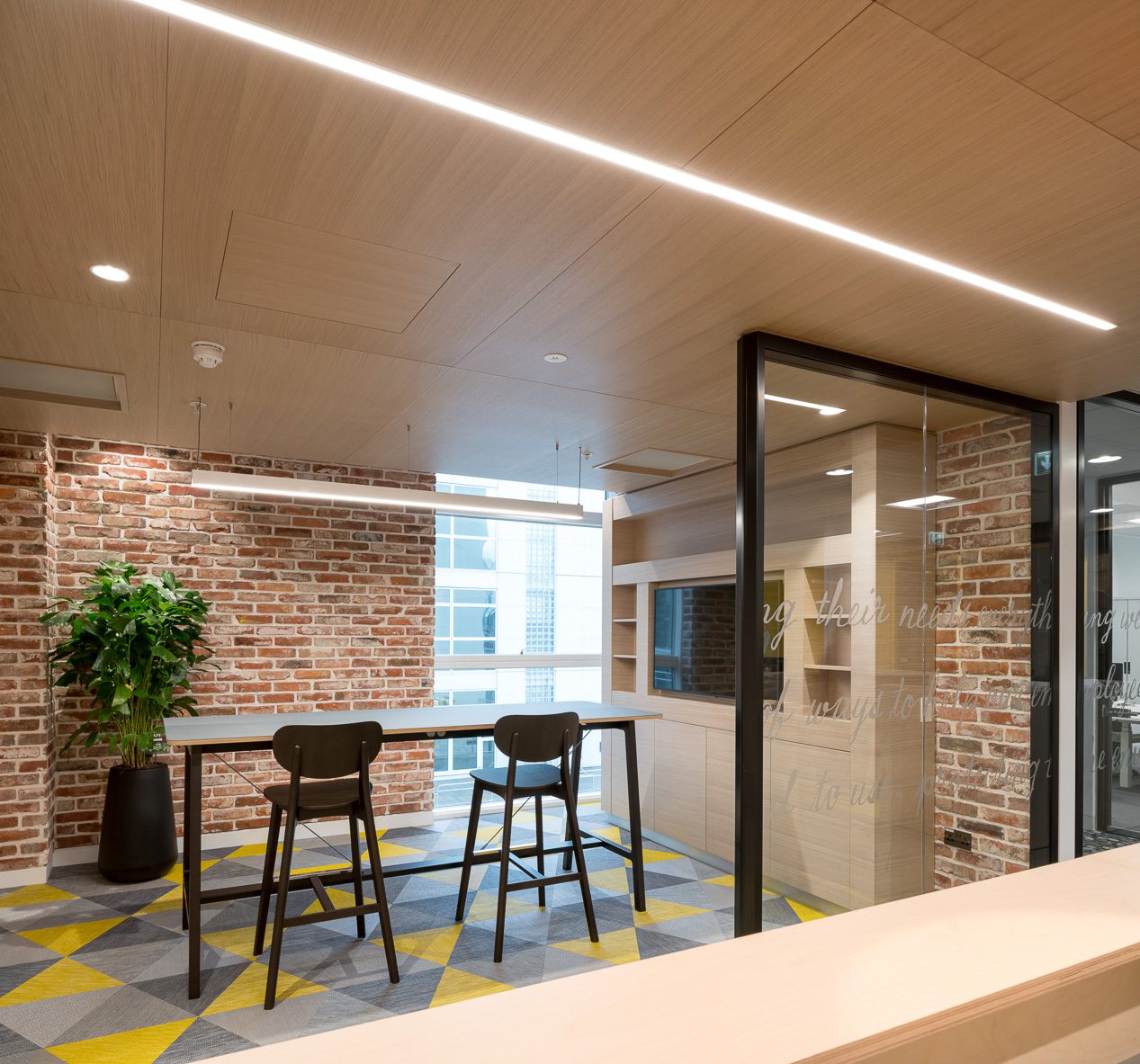
For Johnson & Johnson, a smart lighting system allowed for dimmable and individually monitored fittings. Light levels could be controlled automatically and locally.

Create a variety of busy and quiet spaces. Materials like flooring to be considered to minimise contribution to background noise.
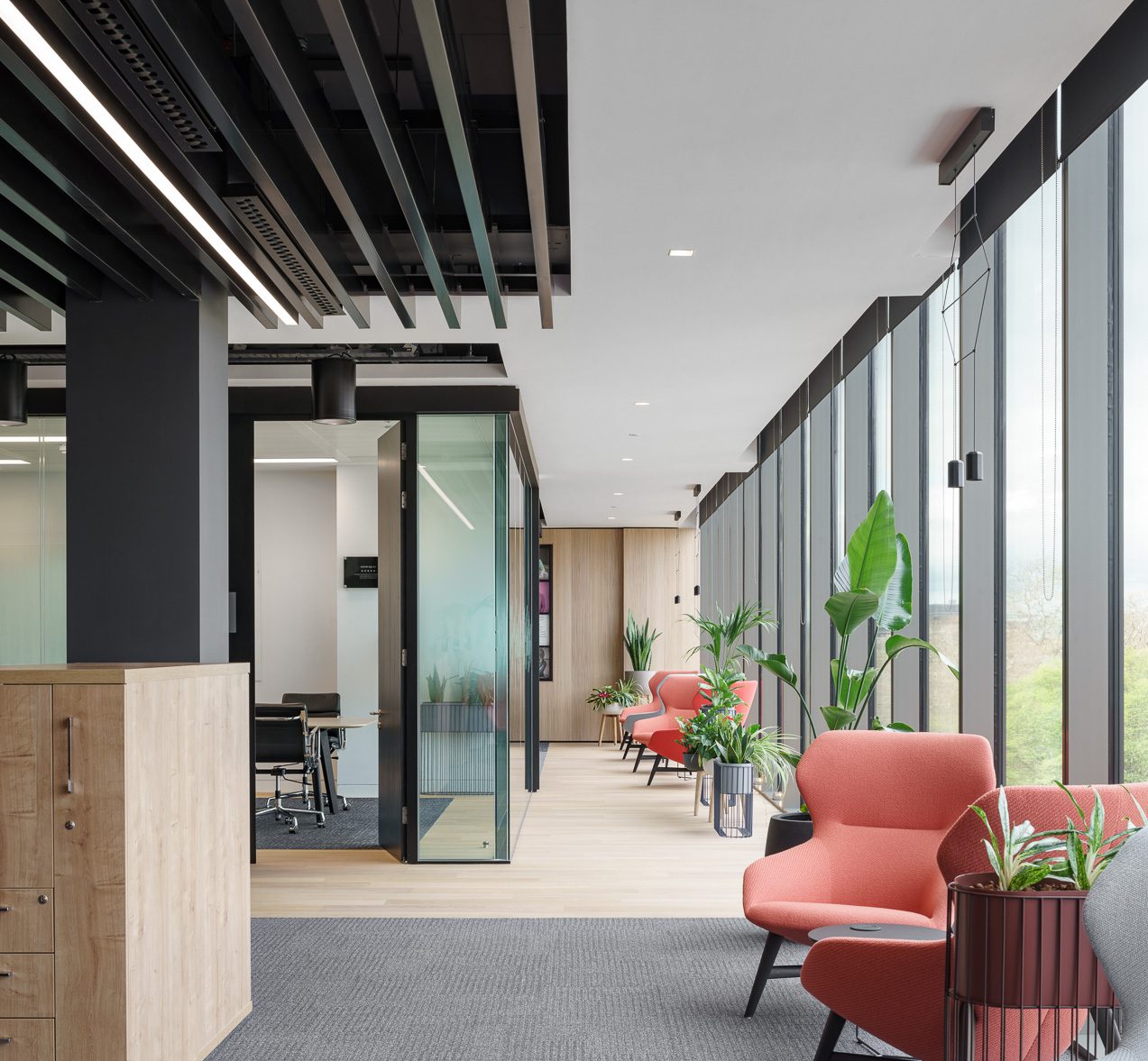
The interior design of Horizon incorporates a series of quiet and busier working environments.

Wayfinding and navigation should be consistent and clear throughout the space.
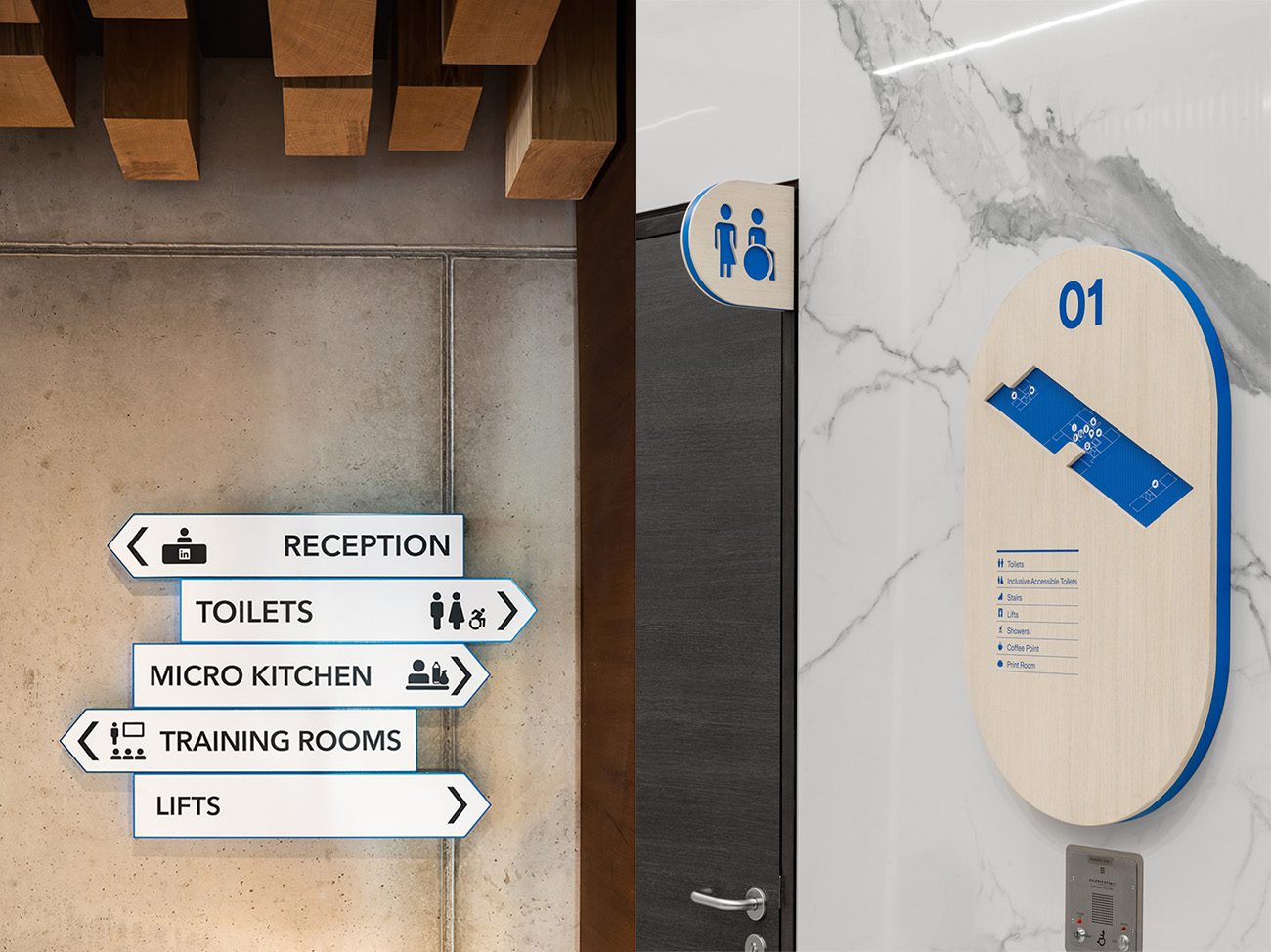
Wayfinding by Seek Design at LinkedIn EMEA HQ and Zurich House draws on corporate branding to enhance consistency.

Offer choice and variety of spaces and seating.
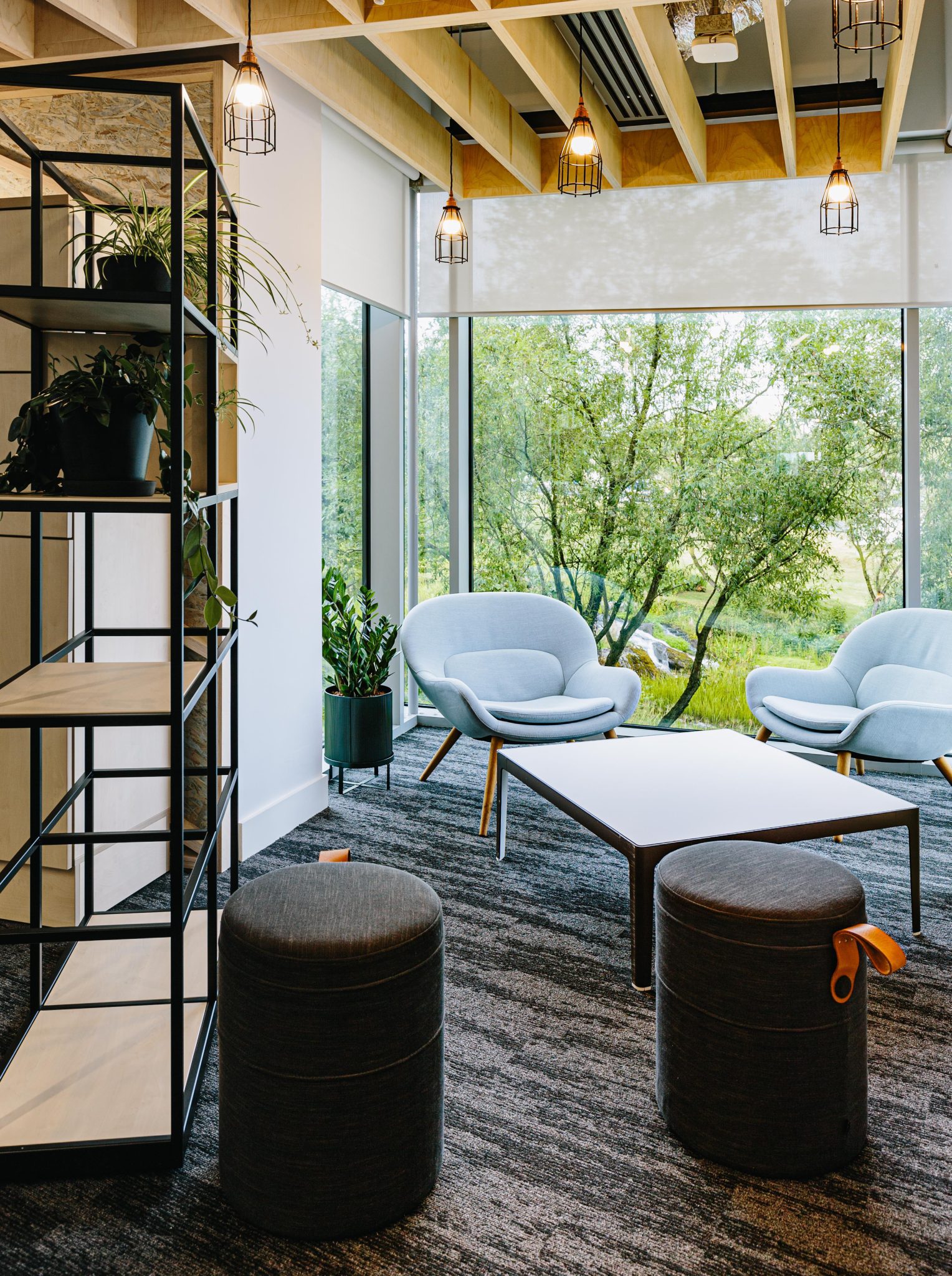
This workplace for Fidelity Investments provides people with a variety of seating options.

Provide spaces where movement is minimal: desks away from circulation areas, screens for privacy, phone booths, designated low-distraction areas.
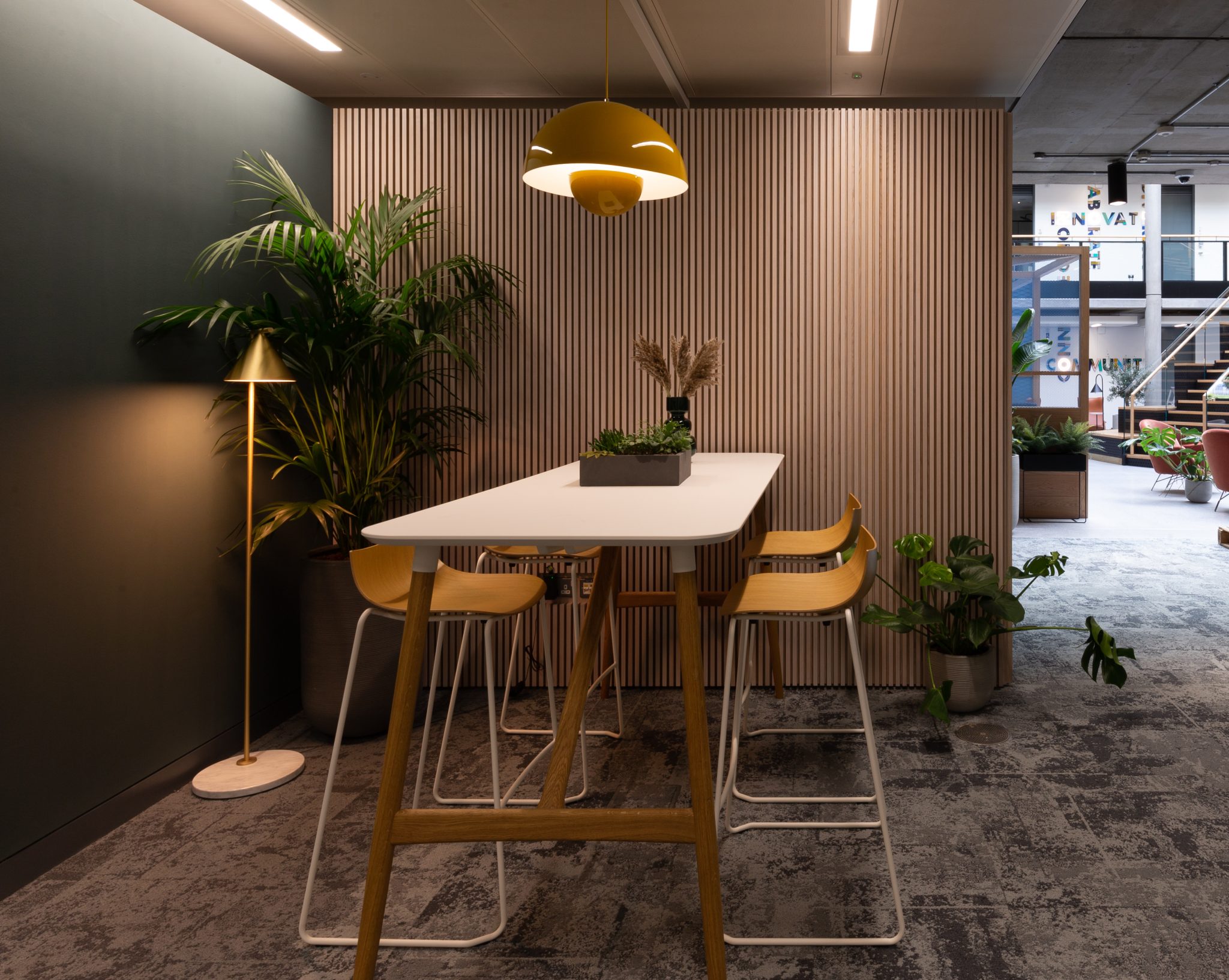
The variety of spaces in PayPal Ireland Headquarters cater to different rhythms and ways of working.

Temperature should be moderate with no sudden changes. Poor air quality leading to smells could contribute to sensory overload.
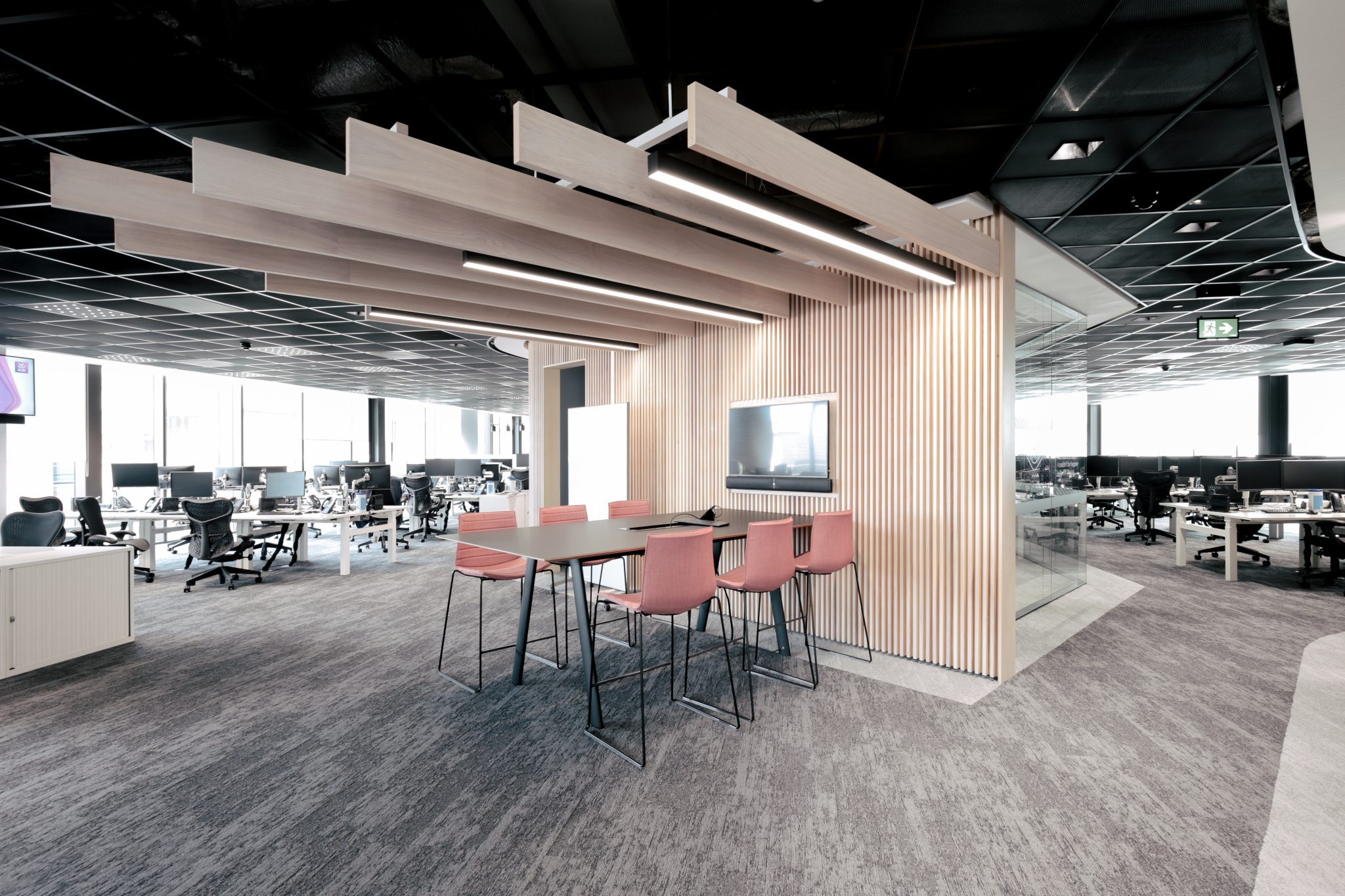
Temperatures are controlled to improve workplace comfort at AIB Corporate & Customer HQ.

With agile desking policies, a digital walkthrough of the office space can enable a building user to book a desk or quiet room and plan their journey.
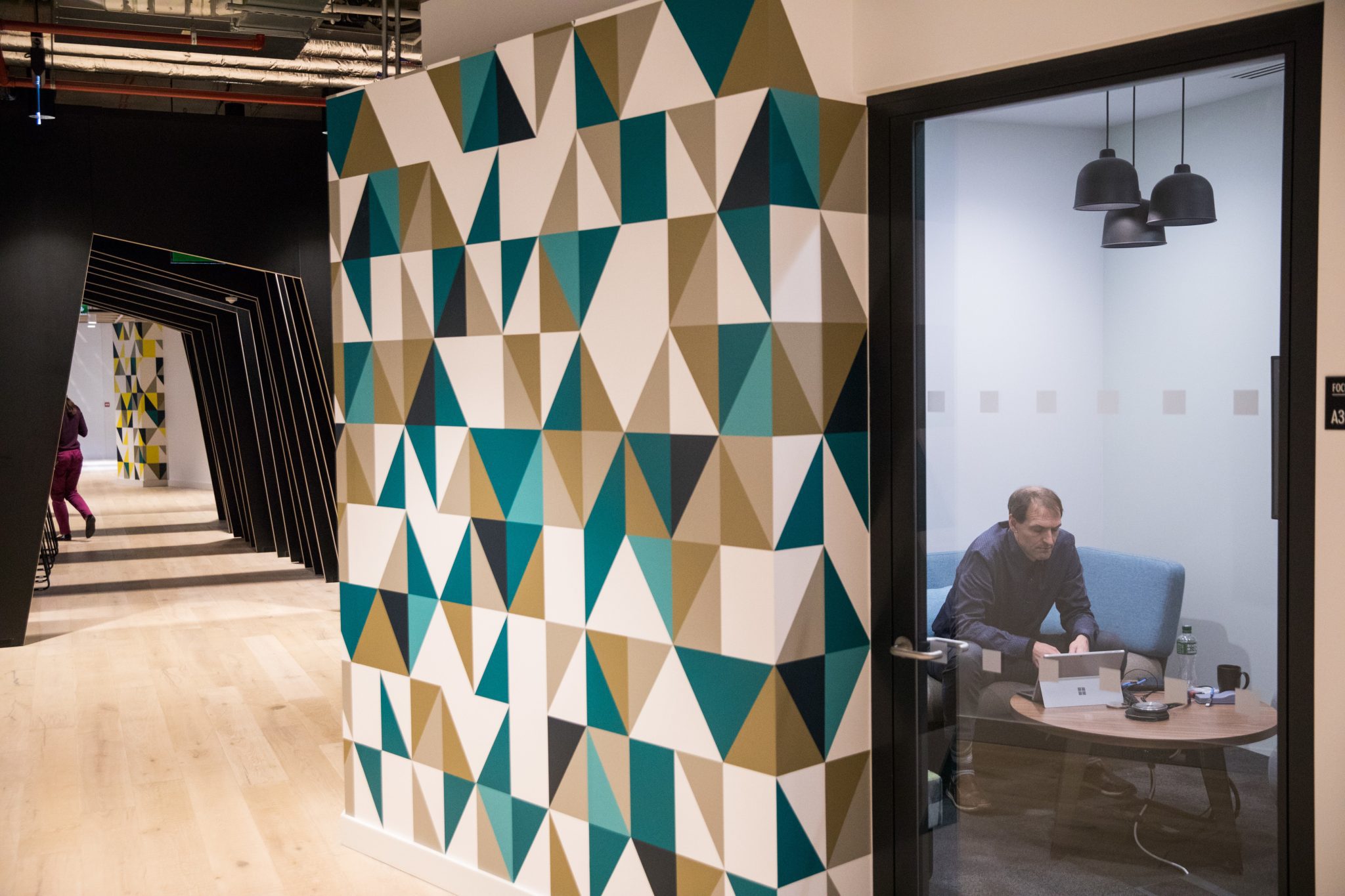
Microsoft’s EMEA HQ at One Microsoft Place integrates smart technologies with a range of work spaces and dedicated focus areas.
Download and share the poster:
